Best EVs 2025: putting this year’s top electric cars to the test
From Mini to Porsche, these are some of our favourite electric cars available to buy right now

Mat Gallagher
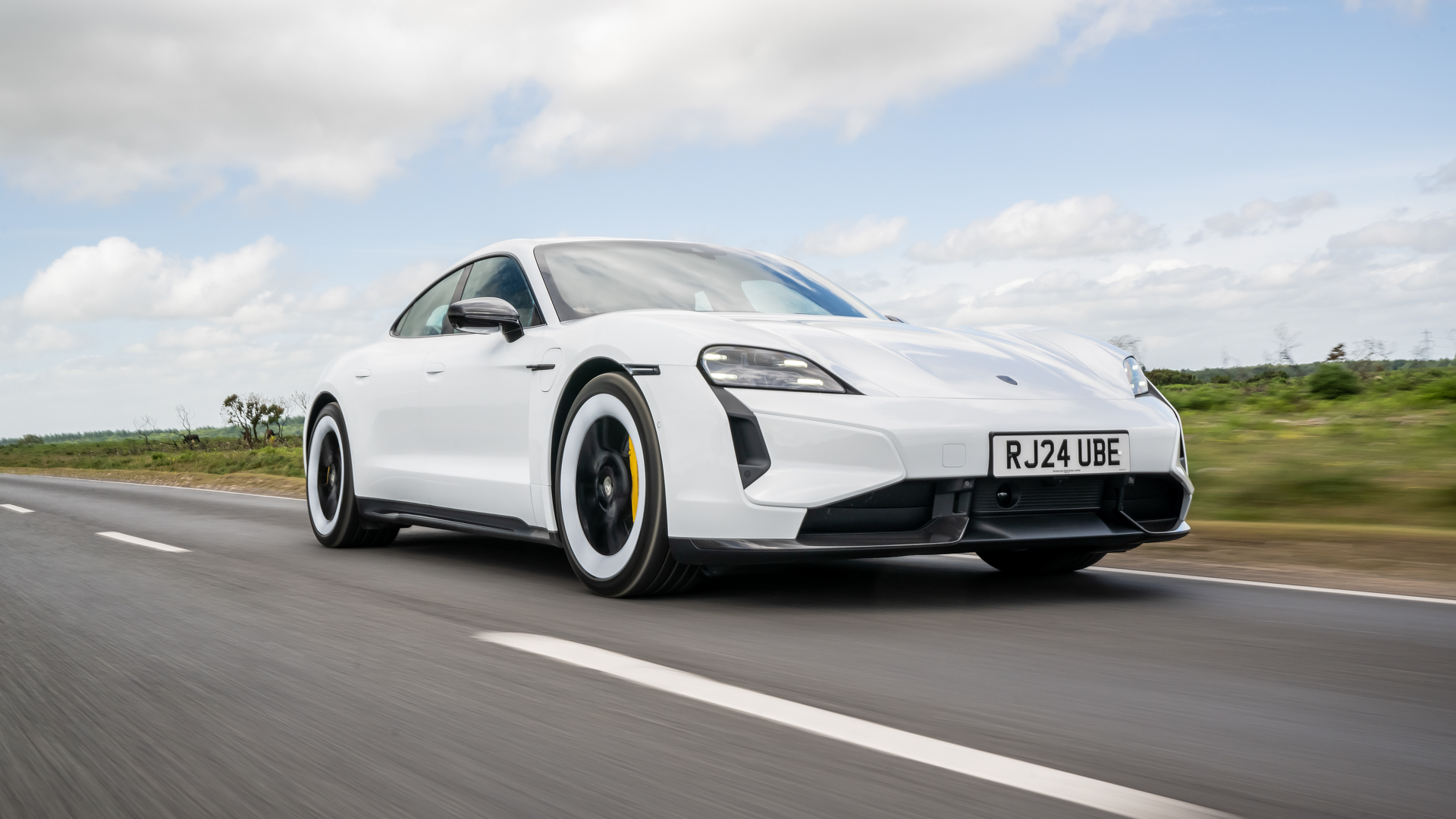
The electric car market is bigger than ever, with a huge range of vehicles available from almost every manufacturer. Everyone from Audi and BMW, to Mercedes, Kia, Mini, Porsche and Volvo – and many more besides – produce a range of electric cars to suit almost every budget and every lifestyle.
Prices are falling and range is increasing, with some EVs starting at less than £20,000, and others driving for more than 400 miles between charges. There are EVs from established, century-old brands, as well as models from upstarts less than a decade old – and all are quickly proving how enticing the EV lifestyle can be.
In 2025 the market includes small city EVs like the Mini Cooper E and Renault 5, all manner of SUVs, a budget estate in the form of the MG5, battery-powered sports cars like the Porsche Taycan, 2,000-horsepower hypercars like the Rimac Nevera, and ultra-luxury offerings like the Rolls-Royce Spectre. Prices run from under £15,000 to over £2m and quoted range estimates span from a little over 100 miles to 450 or more.
With such a broad range of electric options to pick from, there’s also a lot to understand before you make your purchase. Battery size and range are only one part of the EV equation, as charging speed is equally important. Cars with 400-volt architectures can’t charge as quickly as those running 800 volts, for example. And while your local high-speed charger might advertise itself as 350kW, only one EV sold in the UK – the Lotus Eletre – can currently charge that fast.
Once you have your head around battery capacity (some cars have the option of a small or large battery), range and charge speed, it’s time to look at performance – a quicker car generally has less range than a less powerful one – and optional extras, like additional driver assistance systems and upgraded infotainment.
With all that in mind, it’s time to run through our favourite electric cars for sale right now. And if you need a home charger for your electric vehicle, take a look at our best EV Charger guide too.
T3's Top 3
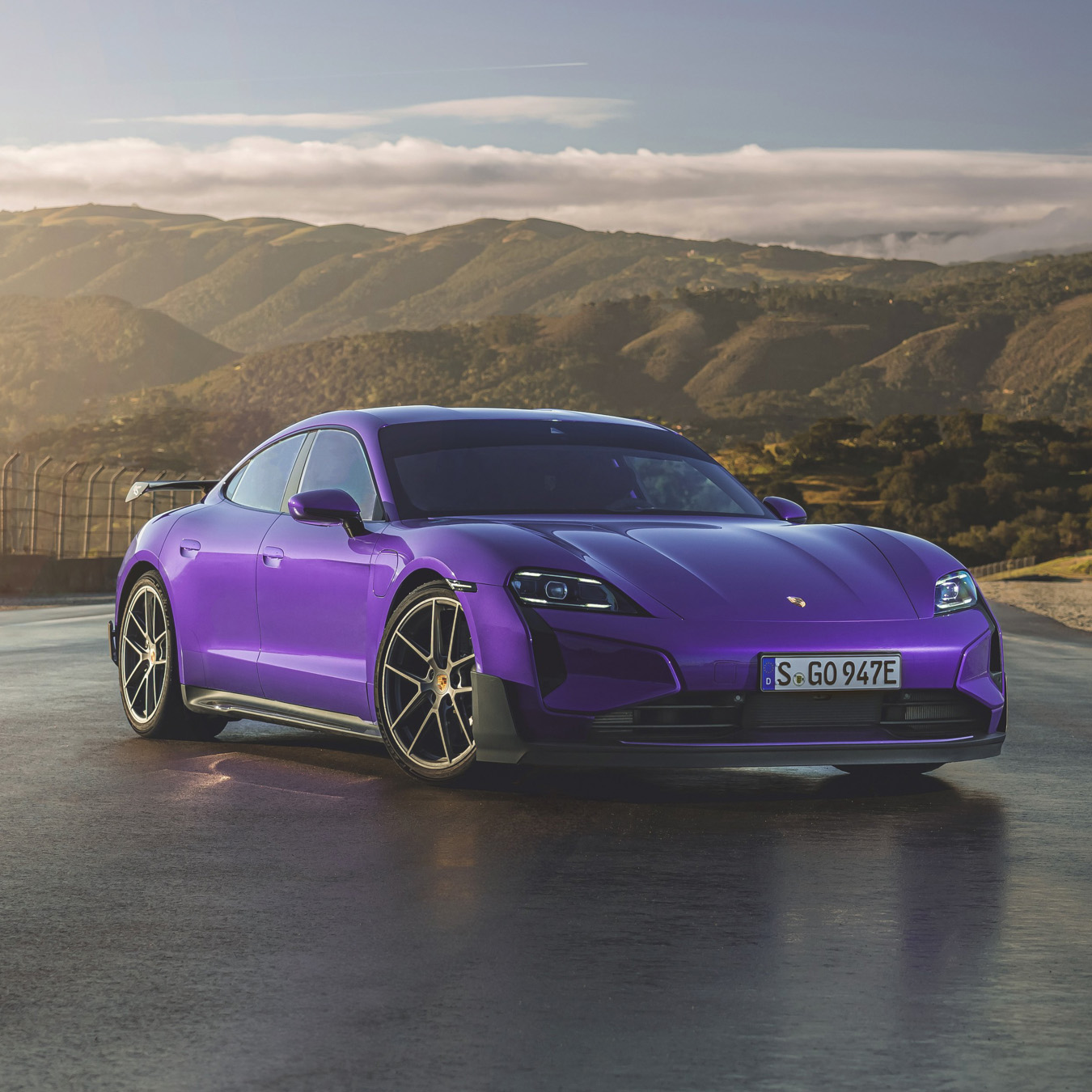
From £90,700
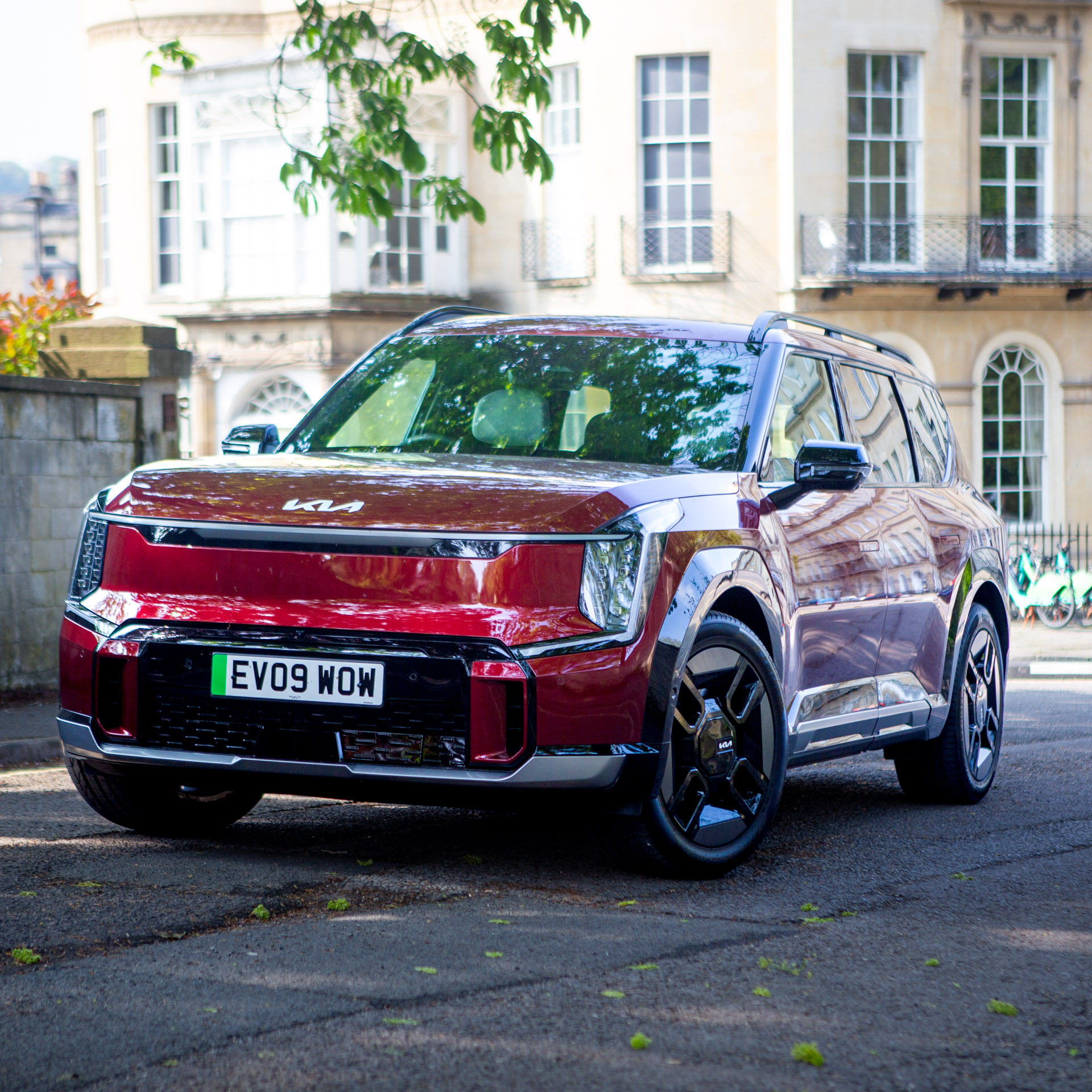
From £65,025
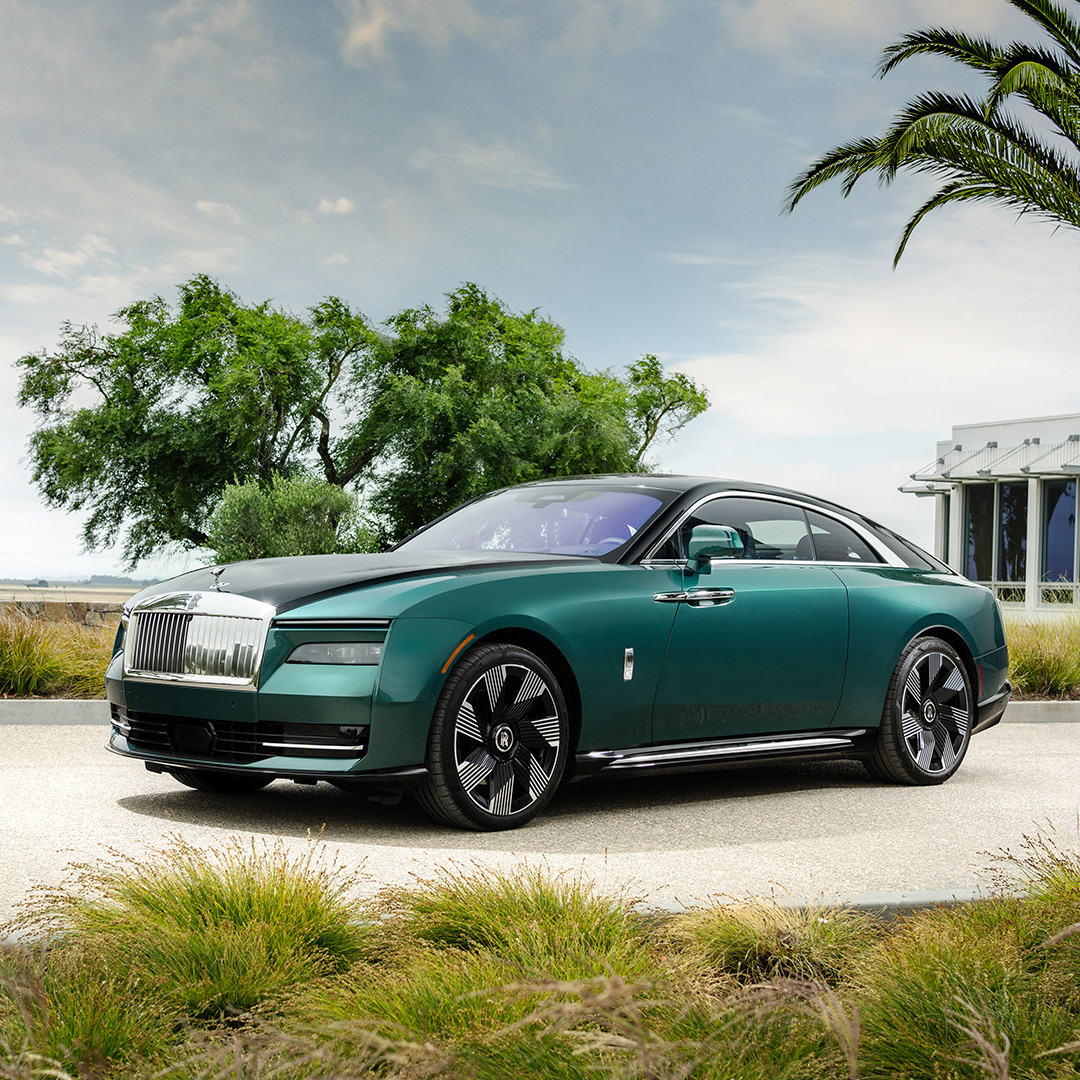
From £350,000
Best electric car 2025
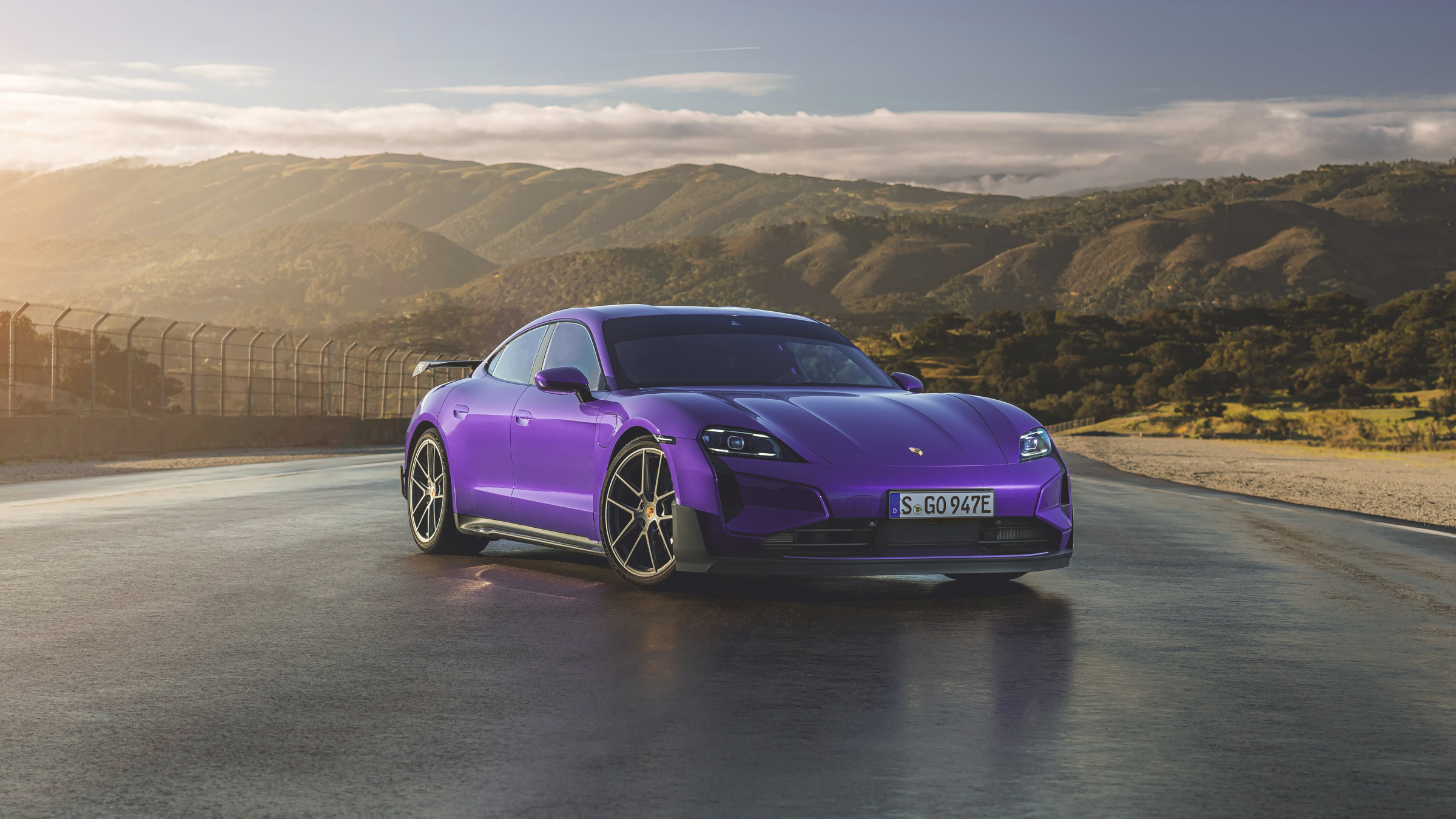

Specifications
Reasons to buy
Reasons to avoid
All you need to know about the Taycan is that it feels like a Porsche. It being fully electric is a fact that quickly shifts into the background the moment you start driving. From the 911-esque seating position to the slim-rimmed and perfectly weighted steering wheel, this is a proper Porsche.
It goes like one too, thanks to between 408 and 1034 mechanical horsepower, depending on which battery you specify and whether the Overboost mode is deployed. Acceleration ranges from 4.8 seconds (0-62mph) for the standard Taycan, down to 2.3 seconds for the Turbo GT – or even 2.2 seconds with the Weissach Package. Despite this, it's quiet, smooth and perfectly civilised when you have big miles to cover.
The cabin is packed with digital displays – up to five if you tick a couple of options boxes – but is still recognisably Porsche, thanks to the driver-focused instrument panel and low, sporty driving position. Instead of fake engine sounds Porsche has created an all-new (optional) soundscape for the electric Taycan, which is something we quite like. Call us children all you like, but it makes driving the Taycan feel like you’re piloting a spaceship.
The Taycan’s range has improved too, with up to 394 miles on the Taycan Turbo and the others not far behind. Add to that support for Apple's next generation of CarPlay and you've got a machine that is as up-to-date as it is quick.
The Porsche Taycan was the winner of Best Electric Car in the T3 Awards 2024.
Best Large Electric SUV


2. Kia EV9
Specifications
Reasons to buy
Reasons to avoid
Kia's flagship EV is a full size SUV with room for seven people, and this thing really does have plenty of room. It's a giant car by UK standards – on par with the Land Rover Defender 130 – and is available with swiveling middle row seats to create a lounge-like space in the back.
Up front there's plenty of space too, as well as some impressive tech. An ultra wide display is made up of two 12.3-inch screens with a 5.3-inch screen for the climate control in the centre. There's fingerprint recognition for access to the controls, a digital key option for entry and a full range of active safety features, including Lane Follow Assist for level 2 autonomy and a digital rearview mirror for a clear view past all your passengers and luggage.
Not only does this beast of a car offer an impressive range of up to 349 miles, but it can charge at up to 350kW, meaning that you can fill up at a fast charger (10-80%) in as little as 24 mins.
The Kia EV9 received Highly Commended for Best Car in the T3 Awards 2024.
Best Luxury EV


3. Rolls-Royce Spectre
Specifications
Reasons to buy
Reasons to avoid
The Spectre is very much a Rolls-Royce that's also an electric car, rather than the other way round. In that respect is caters to Rolls-Royce owners before it does fans of electric cars. That said, this is one hell of an EV.
Powered by a huge 102kWh battery, it delivers a highly respectable 329-mile range despite the size of the car. This might be a two-door coupe, but it's around the same size as the BMW i7 and weighs just under three tonnes.
There's plenty of power here too, making this quick off the mark. The large air suspension system keeps the car flat through the corners though and ensures you never lose that waftability, even when driven hard.
In our Rolls-Royce Spectre first drive, Mat Gallagher said, "It might be a two-door coupe, but the Spectre is no sports car, it’s too refined for that. It’s a car designed to get from point A to point B in luxury, feeling calm and relaxed when you arrived, and it does that beautifully. The cabin is pin-drop silent and serene. It’s almost a shame to put music on and spoil it, except that that sound system is so good."
The Rolls-Royce Spectre received Highly Commended for Best Electric Car in the T3 Awards 2024.
Best Premium Electric SUV
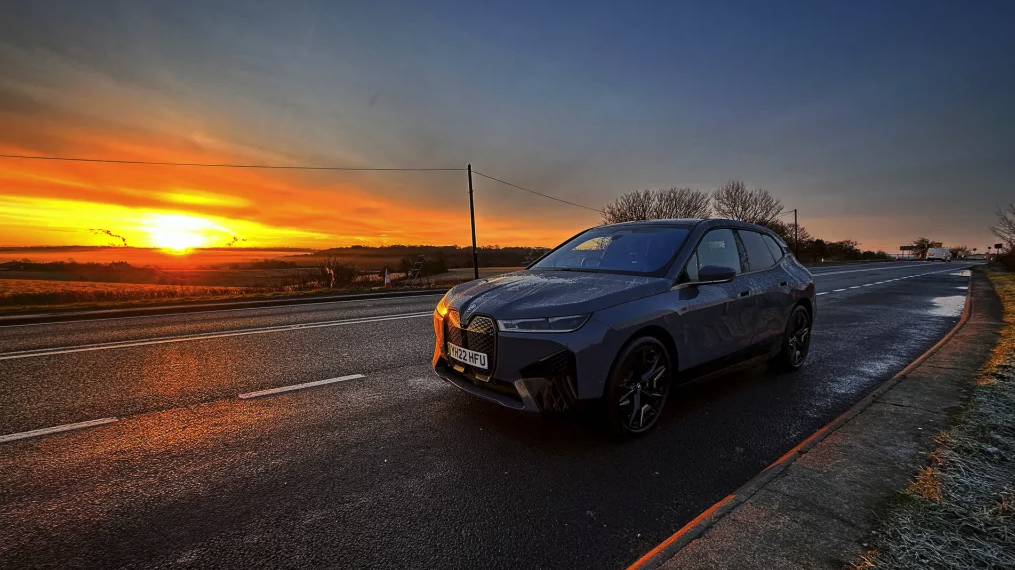

Specifications
Reasons to buy
Reasons to avoid
An EV that does everything? We think the iX M60 is almost there, thanks to its amazing performance, impressive sound system and attractive yet spacious interior. It’s undoubtedly a bit of a beast, with a diverse design and a price tag that is almost twice that of the entry-level iX. But if it’s a luxury electric SUV you’re after, the big BMW is hard to overlook.
The tech-fest interior features a pair of large displays on the dashboard, a spectacular Bowers & Wilkins sound system with diamond tweets and no fewer than 30 speakers, a crystal iDrive controller surrounded by illuminated touch controls, and acres of soft leather.
A massive 116 kWh battery pack means almost 350 miles of quoted range, while 195 kW charging means filling from 10% to 80% can take as little as 35 minutes.
Our editor Mat Gallagher said in the BMW iX M60 review: “I spent a week behind the wheel of the iX M60 with a combination of long and short trips before they had to pry the steering wheel out of my hands. This is, without a doubt, one of the best electric vehicles on the market right now. It combines the utility of an SUV with the power of a sports car and the luxury of a flagship saloon. If you want an electric car that does everything to the max, this could be for you.”
Best affordable EV
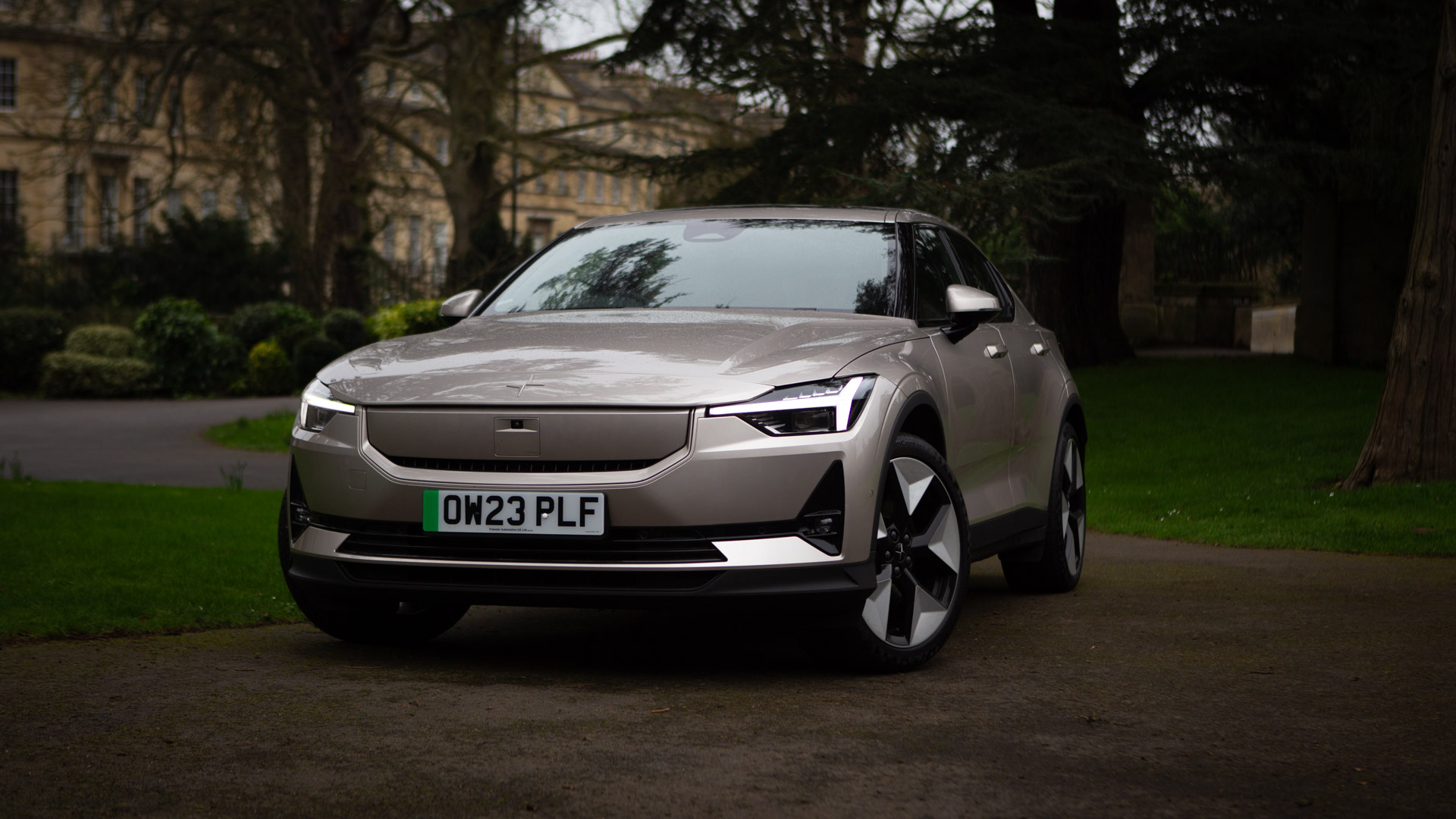

Specifications
Reasons to buy
Reasons to avoid
The Polestar 2 is a fantastic electric all-rounder – and even more so given this is only Polestar’s second car, and its first EV. Based on the same platform as the Volvo XC40 recharge, the Polestar 2 offers a range of over 300 miles and a 0-60 mph time of as little as 4.0 seconds.
Then there’s the Performance Pack, with its manually adjustable, 20-stop Ohlins dampers, and (actually rather tasteful) gold detailing on the brake callipers and seatbelts. Inside, the interior benefits from Android Automotive, which brings native support for Google Maps, Spotify, the Google Play store and Google Assistant, which you can use to set the navigation, play music, adjust the climate control, and even control your smart home devices while out on the road.
In the Polestar 2 review, T3 editor-in-chief Mat Gallagher said: “The Polestar 2 is an excellent car, not least thanks to the power of the Android Automotive system. What is nice about this car is that, while it has elements of future technology, it still behaves in the main, like a regular car. The look and feel of the Polestar 2 are premium for its price point. You feel special driving it – not least because of all the attention it gets.”
Best Electric Limousine
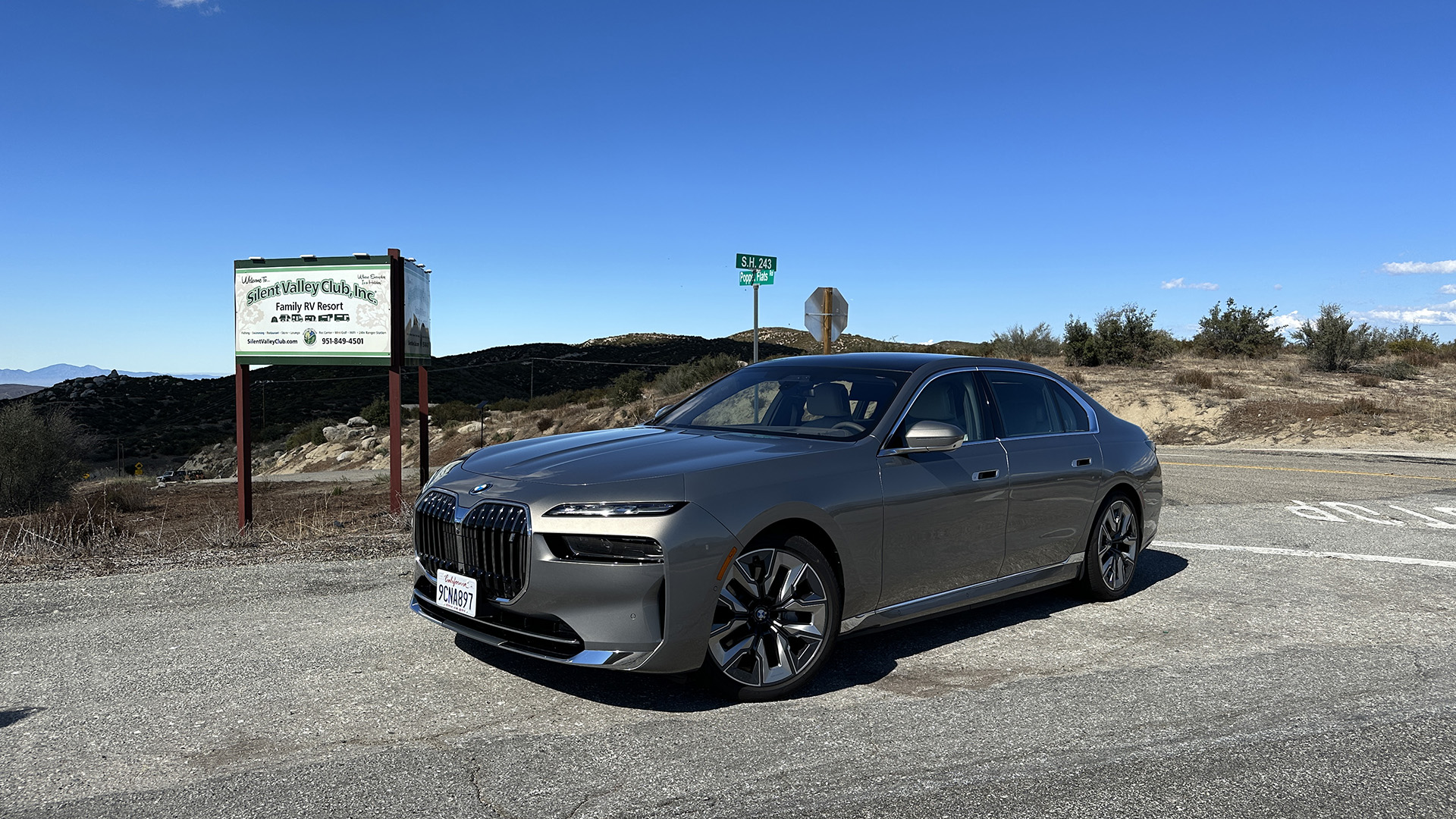

6. BMW i7
Specifications
Reasons to buy
Reasons to avoid
If you thought the Mercedes EQS was a car packed full of tech, then you ain't seen nothing yet – because the BMW i7 is even more impressive. The looks might not be very everyone, but step inside a fully-loaded i7 and you're transported into a world where rear-seat passengers are shuttled around in mobile cinemas.
The i7 has a massive 31.3-inch display suspended from the ceiling, ready for movies, TV shows or whatever else you fancy. The rear seats recline like those in the business class cabin of a transatlantic flight, and in the doors you'll find touchscreens for controlling everything from the music and lighting to the window blinds, air conditioning and massage seats. You can even fold the front passenger seat down (with the tap of a screen, of course) for more legroom.
But this isn't just a car to enjoy from the back. Step into the driver's seat and you'll find the electric BMW i7 is surprisingly fun and engaging to drive. There's also level three autonomy for hands-free driving (where legal) and a pair of large digital displays show BMW's latest infotainment system.
Range is a claimed 388 miles (WLTP) and with 544 horsepower on tap the i7 is no slouch, hitting 62 mph in 4.7 seconds. A maximum charging rate of 195 kW means the battery can be topped up quickly too.
In the BMW i7 first drive, Mat Gallagher said, "What I really like about the i7 is that it really is a driver’s car, yet in the back, it’s the ultimate in luxury. It’s the kind of car you could show up to a red carpet event in and then take on a country drive at the weekend."
Best Sporty EV
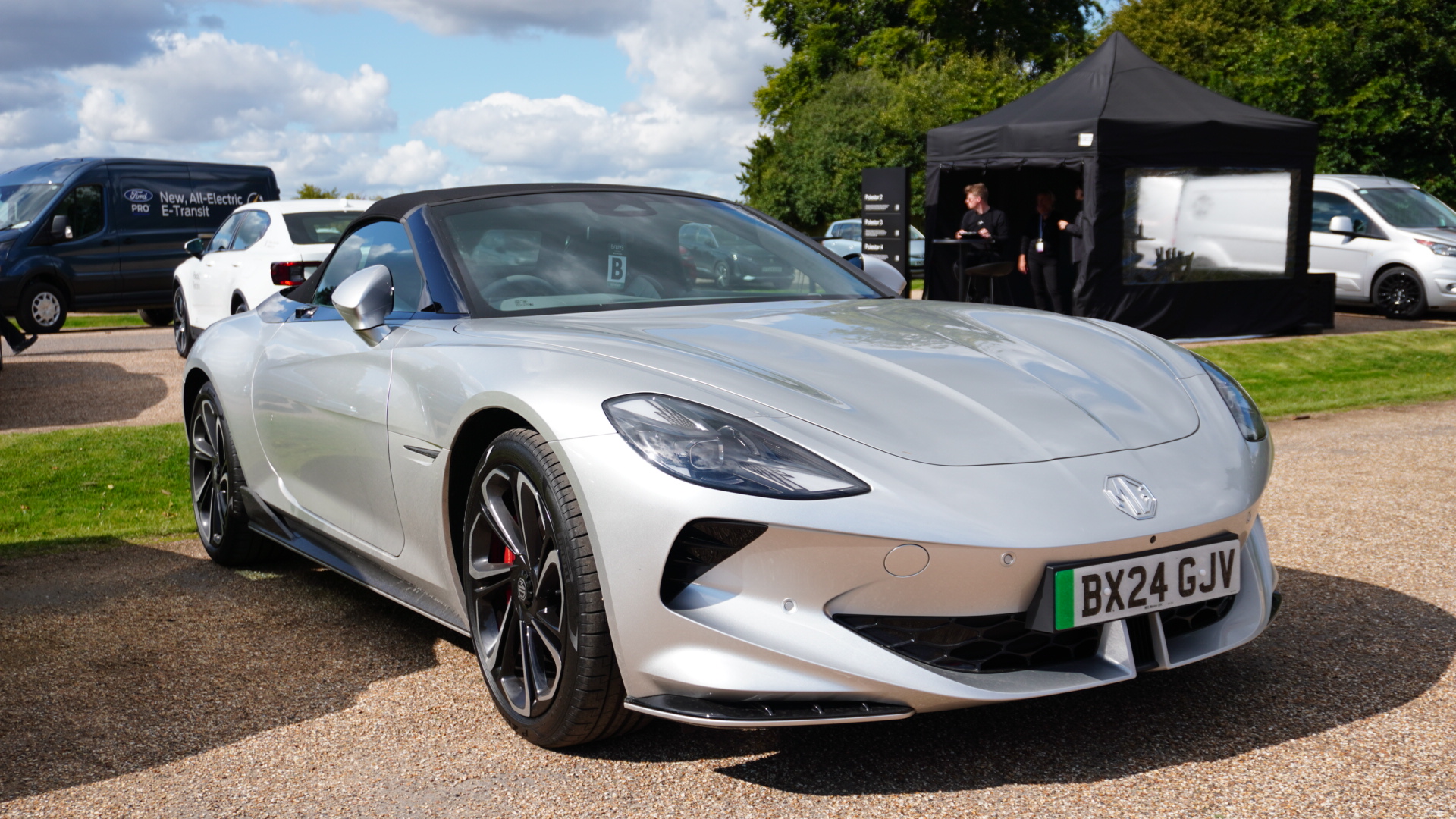

7. MG Cyberster
Specifications
Who could have predicted this just a few short years ago? MG, the former maker of classic British sports cars and current producer of budget-friendly EVs beloved by Uber drivers, now sells an electric two-seat convertible with the vertically-hinged doors of a supercar.
It may have a slightly clunky name, but the Cyberster is legitimately in a class of one when it comes to convertible electric sports cars. It’s beaten both the Polestar 6 and future electrified Mazda MX-5 to the punch, and has done so with conviction.
Two versions are available; single-motor, rear-wheel-drive and dual-motor, all-wheel-drive. T3 drove the latter, which produces 496 horsepower and sprints to 62 mph in a supercar-like 3.2 seconds.
It isn’t the lightest or smallest sports car around – consider it more of a wind-in-your-hair cruiser than a shivers-down-your-spine bruiser. But with prices starting at £55,000 for the single-motor, and only an extra £5,000 for the dual-motor variant, it delivers a unique EV experience at a good price. Your move, Mazda…
Best for distance
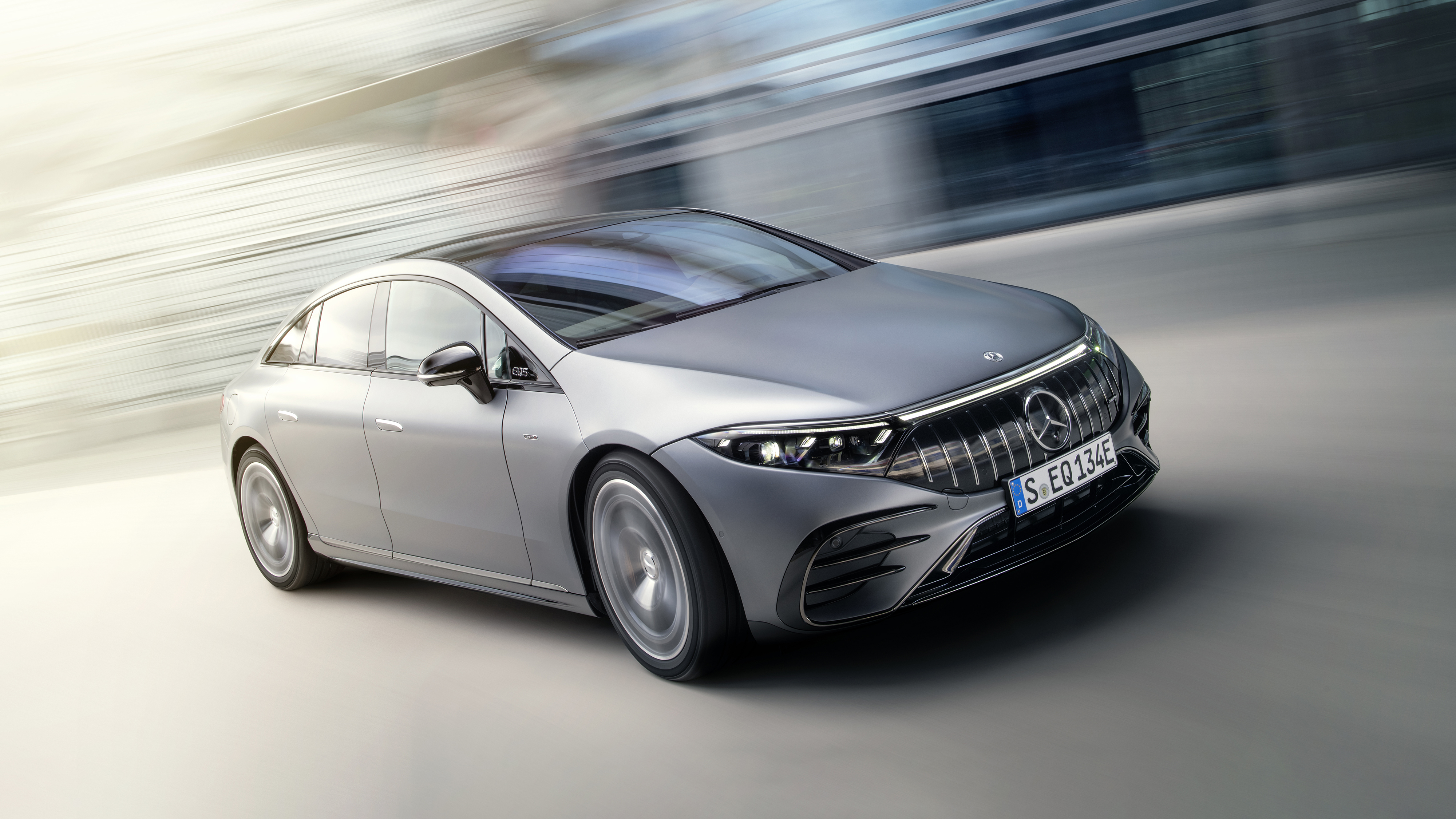

8. Mercedes-Benz EQS
Specifications
Reasons to buy
Reasons to avoid
You could say the EQS is simply an electric version of the Mercedes S-Class, the car that for decades has been a byword for the latest in vehicle technology and fine-riding luxury. But it's actually quite a bit more than that, because the EQS is an all-new car.
A technological showcase, the EQS is the first Mercedes to be powered by a new generation of battery with significantly higher energy density and improved battery management. The result is a massive range of 453 miles (WLTP). Add this to 200 kW fast changing and you have a car that eradicates range anxiety, then fills its battery by 185 miles in as little as 15 minutes.
The EQS also benefits from a smart navigation system that takes charger speed into account, so it might serves up a route that's a few miles longer but which takes you via a faster charger than would be available on the shorter journey. Clever stuff.
Other headline tech is found in the (optional) Hyperscreen, which incorporates three displays into a huge single dashboard panel, and a fully-fledged head-up display. There's also Drive Pilot, Mercedes' semi-autonomous driving system that can take over the driving in motorway traffic at up to 40 mph.
In his Mercedes EQS review, Spencer Hart said, "Driving the Mercedes EQS was a genuinely interesting glimpse into the future of motoring, not only did the semi-autonomous systems make driving long journeys effortless, the long-range and clever mapping essentially killed range anxiety."
Best Electric GT


Specifications
Reasons to buy
Reasons to avoid
“Maserati’s fully electric GT is not just an impressive electric car, it’s an impressive sports car in its own right.” Those are the words of our editor, who was bowled over by the Granturismo Folgore when he drove it in 2024, and added: “The electrification has made it even more powerful, and while you may miss the growl, it still feels amazing to drive on the open road.”
T3 gave the electric Maserati five stars, praising its performance – it’s actually quicker than the petrol version – its great tech, and how it still feels like a pure sports car.
Packing 761hp, the plug-in Maserati is a properly quick sports car, launching to 62 mph in just 2.7 seconds – significantly quicker than the V6-powered version. It also charges quickly, thanks to an 800-volt electric architecture and up to 270 kW DC fast charging, while the 92.5 kWh battery has a maximum claimed range of 280 miles.
Inside, the £180,000 Granturismo Folgore looks just like the internally-combusted version. There’s a 12.2-inch display ahead of the driver, along with a 12.3-inch touchscreen for controlling the infotainment system, and below that you’ll find an 8.8-inch screen for the climate controls.
Maserati’s infotainment is powered by Android OS and works nicely, plus there’s support for wireless Apple CarPlay and Android Auto, if you prefer. Our editor said the optional Sonus Faber sound system, complete with 19 speakers, is “a must for any audiophiles,” along with the Tech Assistance pack.
Best Affordable Electric SUV
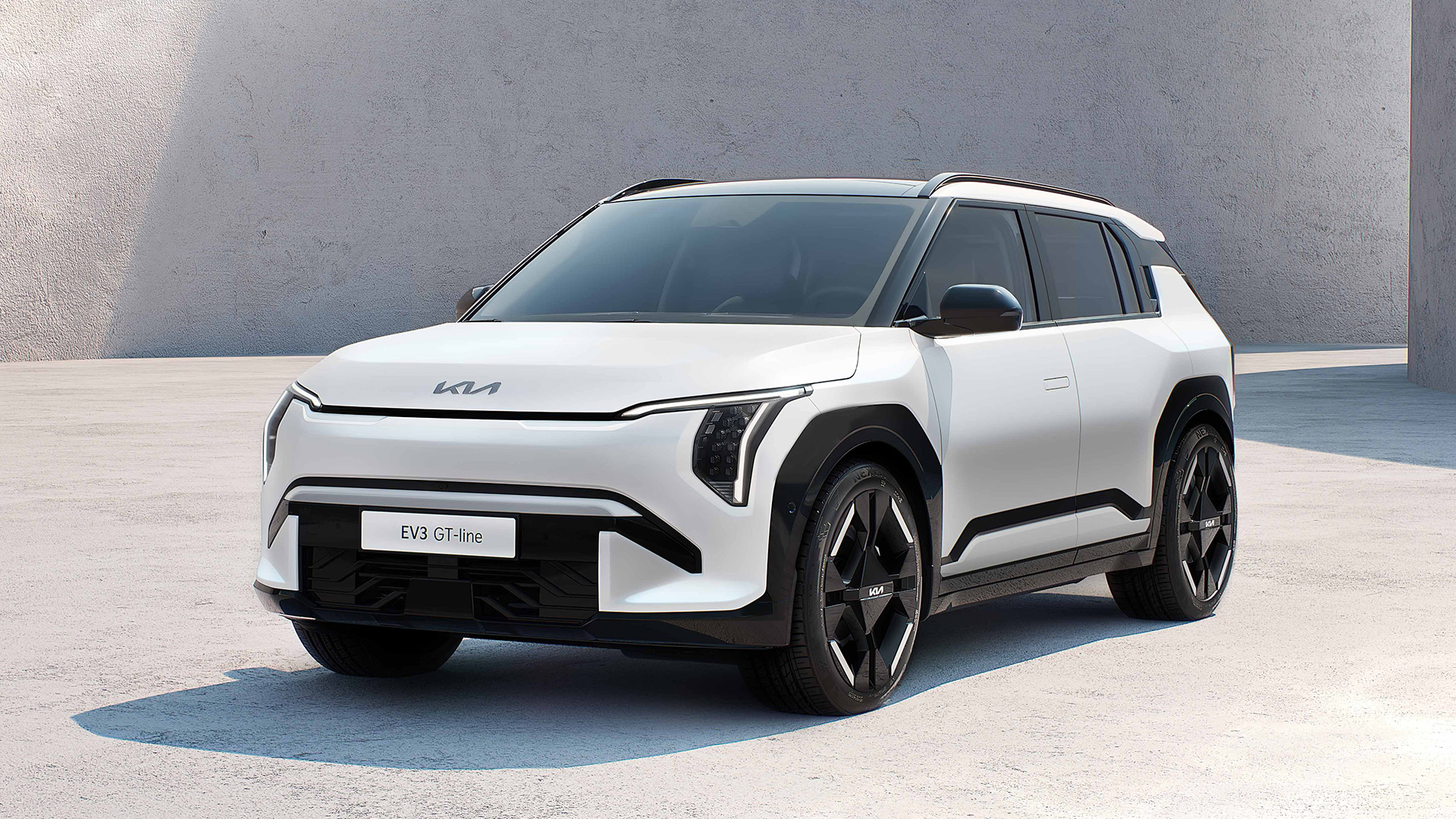

10. Kia EV3
Specifications
Kia is on a roll at the moment, and its small new EV is sure to be one of the most exciting cars of 2025. Called the EV3, it sits below the larger EV6 and frankly enormous (and also very good) EV9 seven-seater.
The EV3 serves up a fantastic, concept car-like design that makes it look like a scaled-down EV9, and excellent value, with prices starting at £32,995. The car shares the same E-GMP electric platform as other EVs from Kia, Hyundai and Genesis, but misses out on the 800-volt wiring and powerful charging of those cars. Instead it makes do with 400 volts and a maximum charge rate of 130 kW (or just 102 kW for the smaller of two battery options). That’s enough to fill the battery from 10 to 80% in 31 minutes.
Range is a claimed 270 miles from the smaller 58.3 kWh battery, or 375 miles from the 81.4 kWh pack. Our reviewer found the Kia EV3 managed an average efficiency of 3.5 miles per kWh, which translates into about 285 miles of real-world range for the bigger battery.
We found the EV3 to be nippy and responsive to drive (power is 204 bhp and the 0-62 mph is 7.9 seconds), while being comfortable across mixed road surfaces, and practical too.
Best City EV
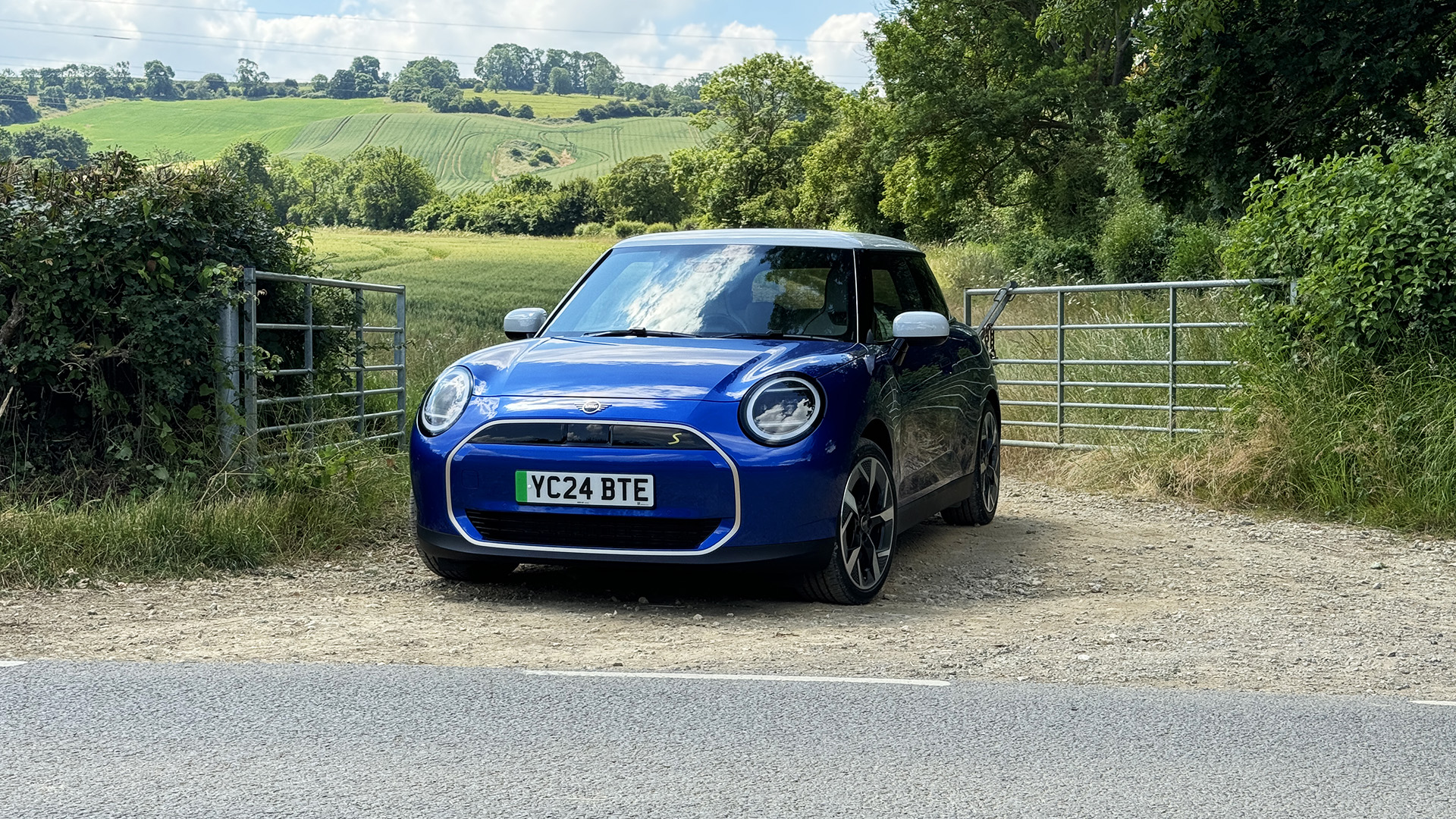

11. Mini Cooper E
Specifications
Affordable fun and practicality served in equal measure – that’s what the latest generation of electric Mini Cooper delivers. It looks smarter and better resolved than its predecessor, at least to our eyes, while still packing a heady dose of fun, complete with sharp handling, a set of quirky electric sound effects in place of an exhaust note, and more range than ever before.
The entry-level Cooper E has its limitations when it comes to charge speed, range and overall performance, but the slightly pricier Cooper SE fixes all of that, and then some. You get a 50 kWh battery with a range of up to 249 miles, almost 220 horsepower and a 0-60 mph time a shade over 6.5 seconds. There’s also go-kart mode too, of course, complete with spicier performance and an artificial engine sound that blends old and new with surprising (and addictive) success.
We love the new interior, which is slightly roomier and plusher than before, but the standout feature is the all-new dashboard touchscreen. A perfectly round OLED display, it’s a bit overwhelming at first but it soon makes sense – and it does a great job of incorporating Apple CarPlay and Android Auto, too.
In our first drive of the new Mini EV, our editor said: “If I was to pick any small EV right now, it would be the Mini Cooper SE. It’s a great design with some great handling and lots of fun tech onboard.”
Best Family SUV


Specifications
Reasons to buy
Reasons to avoid
It was a long time coming, but when the Volvo EX90 finally arrived we knew it had been worth the wait. Essentially an electric equivalent to the much-loved XC90, the EX90 is a luxury seven-seat SUV with a classy minimalist design, loads of tech and an incredible 3D sound system by Bowers & Wilkins.
We liked the EX90 so much when we drove it in 2024 that we awarded it the full five stars. Our editor said: “The Volvo EX90 sets out to offer a truly premium electric SUV experience and it doesn’t disappoint. With a beautiful design inside and out, and a wealth of advanced tech and safety features, this shows just how serious Volvo is for its EV models.”
Sharing a platform with the Polestar 3, the EX90 sits in a class above its Swedish sibling, starting at £96,255 compared to £69,900 for the Polestar. For that significant outlay you get a true seven-seater with a large, 111 kWh battery and up to 374 miles of range. Charge speeds are up to 250 kW, and Volvo says the battery will fill from 10 to 80% in around 30 minutes.
Despite being a heavy car, at about 2,700 kg, we found the EX90 handles incredibly well, thanks in part to the adjustable, dual-chamber air suspension. Inside, the 25-speaker, 1,210-watt sound system will blow you away with its Dolby Atmos compatibility, plus there‘s even a mode that makes the cabin sound like you’re inside Abbey Road Studios.
Get all the latest news, reviews, deals and buying guides on gorgeous tech, home and active products from the T3 experts
Alistair is a freelance automotive and technology journalist. He has bylines on esteemed sites such as the BBC, Forbes, TechRadar, and of best of all, T3, where he covers topics ranging from classic cars and men's lifestyle, to smart home technology, phones, electric cars, autonomy, Swiss watches, and much more besides. He is an experienced journalist, writing news, features, interviews and product reviews. If that didn't make him busy enough, he is also the co-host of the AutoChat podcast.
